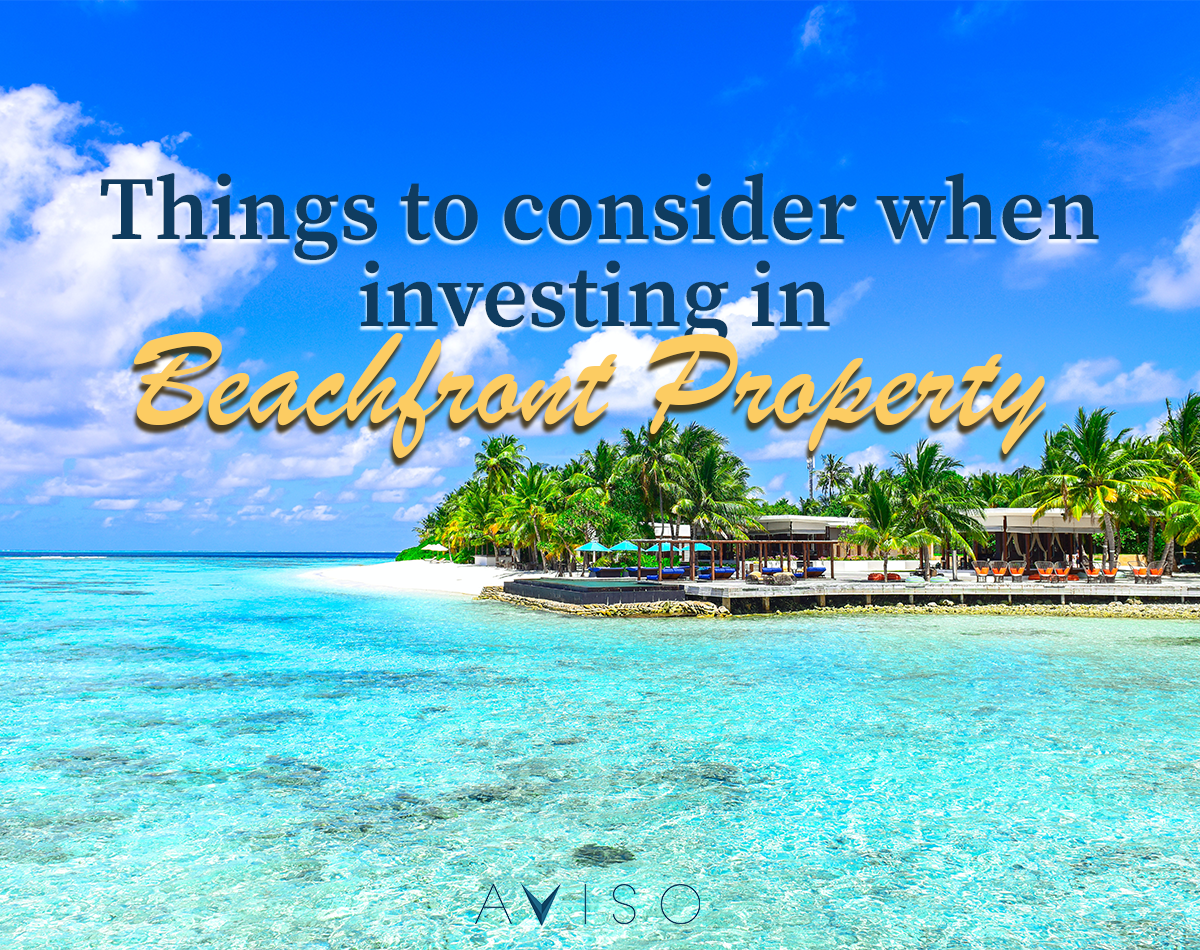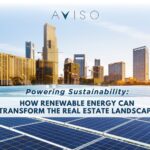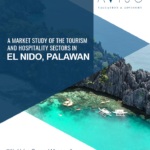
Following the reopening of the economy, the hospitality and leisure industry is in the midst of a strong comeback. After two years of strict travel restrictions, people are eager to travel and visit tourist attractions. With the implementation of hybrid work programs involving work-from-home arrangements in various companies, employees can now work remotely from beach resorts, mountain cottages, and similar relaxing locales to de-stress.
Furthermore, numerous professionals are opting to live outside the bustling metropolis, away from urban sprawl, traffic, and pollution. SMEs and corporates have seen the benefit of the hybrid work model, which freed up more time for both work and leisure. Given these advantages, there has been an emerging trend to acquire or lease properties outside of cities, and beachfront or waterfront properties are one market segment that is seen to profit from this emerging tendency.
Here are things to consider when investing in waterfront or beachfront properties:
1. Natural Calamities
In general, properties in sheltered coves and bays are superior to other waterfront properties as these provide protection from storms, tsunamis, and other meteorological phenomena. Properties facing the South China Sea and West Philippine Sea endure less severe weather conditions compared to properties facing the open Pacific, which are often subjected to the full force of Pacific typhoons. Consequently, insurance premiums are more expensive for Eastern seaboard properties -if insurance companies agree to issue at all. Maintenance costs are likewise higher for these properties.
Therefore, the prospective investor should research local and national building codes to ensure that beachfront structures can withstand winds from powerful typhoons. A review of flood maps from Project NOAH (Nationwide Operational Assessment of Hazards) can determine the potential flood frequency and severity in the subject property’s area. To mitigate these risks, sound construction on high ground is required.
Moreover, sea levels are expected to rise by at least 2.7 meters by 2050 as a result of global warming. Jakarta, purportedly the fastest sinking city in the world, is projected to be totally submerged by 2050 if not for government interventions. Thus, it is beneficial in the long term to acquire a waterfront property that rises at least 5 to 10 meters above the waterline.
In addition, an investor should consider the weather in coastal areas throughout the year; certain features such as nearby mountains, forests, or nearby islands induce weather phenomena such as mists, wind, rain, currents, and unique wave movements.
Despite the risk of adverse weather, waterfront properties tend to have the higher property values compared to landlocked properties due to more positive value factors such as the view or waterfront premium, access to a recreational body of water, access to a source of income (fishing), and the overall implicit lifestyle aesthetic of a beachfront or riparian community.
2. Potential Rental Income
There are numerous ways to monetize waterfront property. Typically, the property is used as a hospitality vehicle, such as a beach resort or hotel. Less capital-intensive options include registering the property as an Air Bed and Breakfast (Airbnb), or as a long stay or short stay apartment. Residential condominium units can also be co-opted under a time-sharing business model run by a hotel management company. There are wide options or combinations of selections to benefit from waterfront investment properties.
The profitability of monetization options is determined by a number of factors, including 1) the technical capacity of the property owner: can he or she operate under different business models? 2) the budget for property acquisition and development (CAPEX) including the cost of the property itself (the property could be raw land or an existing structure or hospitality business), 3) demand and supply conditions 4) operating costs, including the cost of logistics (critical in far-flung island properties, which may require shipping water and petrol), 5) the cost of money or financing and 6) the physical characteristics of the property itself, including location, which is a critical factor.
All of these factors determine the property’s return on investment. Whereas it is difficult to generalize returns or profit margins across different areas of the country, under prevailing economic conditions, an internal rate of return (IRR) of 8% to 12% is satisfactory, 13% to 15% is high and 16% to 18% is extraordinary. As the market for such properties expands, well-positioned beachfront properties should do well in the future.
In addition, we recommend researching nearby rental properties to determine local prices and the nature of competing investors -which market segments are served vis-a-vis those that exist and market gaps of unserviced emerging market segments such as work from home workers and digital nomads. Before investing in the property, it is a good practice to assess costs against benefits.
3. Maintenance Cost
First-time buyers of beachfront homes should be aware that these beachfront properties necessitate higher-than-average maintenance costs. Since salty air is particularly corrosive, the roof of a beachfront house may need to be replaced every 15 years rather than the usual 20. This cost is over and above the regular repair work necessitated by the occasional super typhoon.
In general, most new structures that follow the National Building Code should be able to survive most strong meteorological events.
4. Accessibility and Amenities
Accessibility focuses on physical distance and travel time distance from the investment property to places of work and transaction areas (economic centers such as CBDs, ports, market places), places of leisure (sports and recreational venues), education (schools), healthcare (clinics and hospitals), transport terminals (bus terminals, airports, and seaports) and places of worship (churches). The quality of the road network (pavement quality, width, incline/gradients, curviness) and other infrastructure support facilities the property has access to, is a major value driver as well. In general, the easier or faster the travel time from the property to and from potential destinations, the more time savings are realized by the property owner or tenant, and this benefit is reflected as a price premium of the property.
The presence of amenities, therefore, spells the difference in pricing a stunning island with powdery white sand beaches or a mainland hotel with a less extraordinary beach. With proper accessibility, the latter can have a superior value.
5. Search for Emerging Areas
Areas with good accessibility, no more than 2 hours’ travel time from major metropolitan centers stand the most to gain from current trends. These metropolitan areas include the NSCR, Cebu, Iloilo, Davo, and the Golden Triangle growth area in the Pampanga River basin (Clark, Angeles, San Fernando, and nearby cities and municipalities). Properties within 2 hours of these urban centers will benefit from the new hybrid work model as well as the resurgence of regular domestic and international tourism. However, while the properties within the stated 2-hour travel radii likely continue appreciating in value, their current market value would already be expensive -the infrastructure factors would have already been priced-in.
Land banking potential for waterfront properties can be realized by analyzing the timing of infrastructure projects. The PNR has several planned railway lines that would render certain destinations effectively within the 2-hour travel time radius requirement. These would include the NSCR, which would be completed between 2026 and 2028, the South Commuter Line, the LRT-1 extensions projects, and the LRT-7 line. Furthermore, major airport expansions in Clark, Cebu, Bohol (and other future locations) also improves travel time by increasing capacity. The same applies to seaports and their RORO ferry terminals. New highways such as the CLLEX, TPLEX, North Loop, and Skyway extensions effectively allow certain geographic markets to travel within 2 hours of beachfront property.
Other emerging areas can be defined by market gaps in demand created by a change in demographics, social norms, and the use of technology. An ex-pat group of retirees or a new company with a large workforce may relocate to a location two hours away. This event creates a market gap.
6. Technology
The Work-from-home market (and regular tourism, to a lesser degree) requires good internet connectivity (at least 25 MBPS upload and download bandwidths) to enable virtual meetings and workgroup collaborations. Subsequently, the advent of 5G will usher in a more pervasive application of connectivity applications, as well as the efficiencies created by the “internet of things.”
Beachfront or waterfront property values will be highly dependent on connectivity to attract the current and future markets. This will imply that appropriate infrastructure investments in modems and wifi hubs would have been made. Moreover, power usage in the future will be high due to the necessity for many smart gadgets in a 5G ecosystem. Far-flung island properties isolated from mainland power grids will have to produce their own energy either through renewables or carbon-fueled gensets. Thus, ICT and energy provisions are especially important for waterfront properties to be effectively utilized by the hybrid work market.
7. Neighborhood and Community
If you require a peaceful vacation home in a less-crowded area, research street and neighborhood conditions. It is also necessary to determine whether the location of the property and the local community is peaceful. Some beachfront properties appreciate despite the lack of infrastructure but where the community is known for its safety, local culture, and vibe. The General Luna area in Siargao Island is a good example. From 2015 through 2019, property values surged by more than 300% as investors were lured by the Siargao beach culture. The Dumaguete area is another example where similar gains were made by the local property market.
In closing, the pandemic and the reopening of the Philippine economy have revealed certain market opportunities in the property market. The lockdown economy accelerated the development of hybrid work model, which created a market gap in demand for beachfront or waterfront properties with accessible locations, good provision for amenities and technologies; and a safe and work-conducive local community. While the same could be argued for non-waterfront properties, it is fairly evident that the Philippines is disproportionately endowed with beautiful beaches and riverbanks. This comparable advantage should translate to superior value appreciation for qualified properties.
And if there is uncertainty regarding the potential for a candidate property, a highest and best use study with an emphasis on access, geo-hazards, technology, and community can be undertaken by a qualified valuer or consultant.
Written by: Roque Sorioso Jr. and Mary Grace Ladringan
Aviso Valuation and Advisory Corp. is a real estate consultancy firm that offers valuation and business advisory services compliant to international standards such as the International Valuation Standards (IVS) and International Financial Reporting Standards (IFRS). To assure that we only produce high-quality deliverables, as needed, we do tasks beyond the usual appraisal process like verifying pertinent property documents (i.e. land titles, tax declarations, etc.) with the appropriate government agencies for due diligence purposes prior to the acquisition of the properties.









